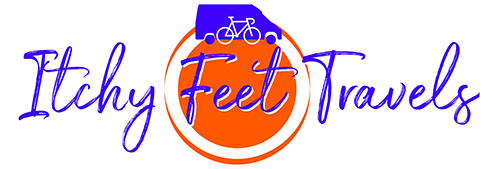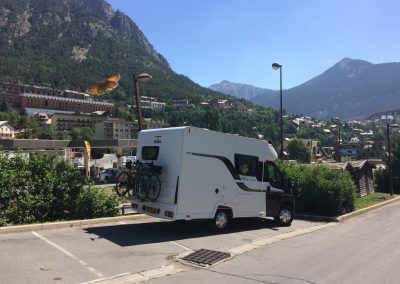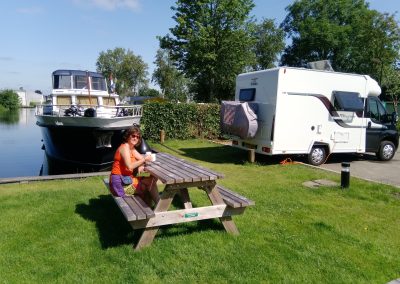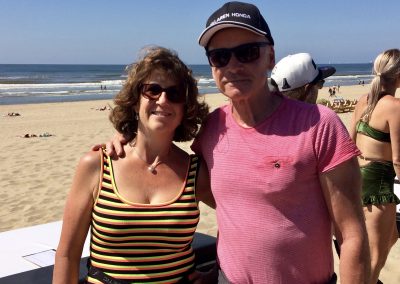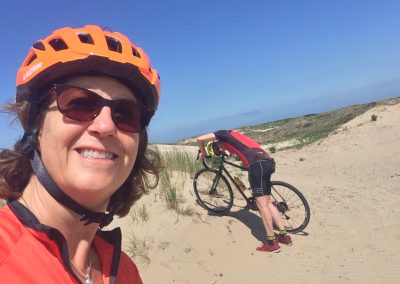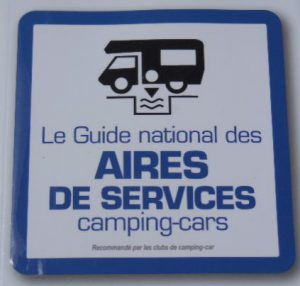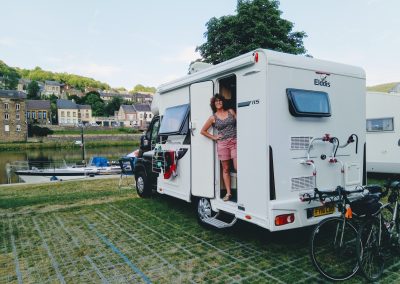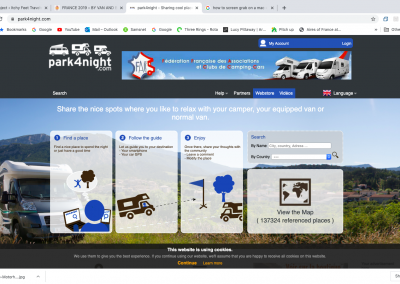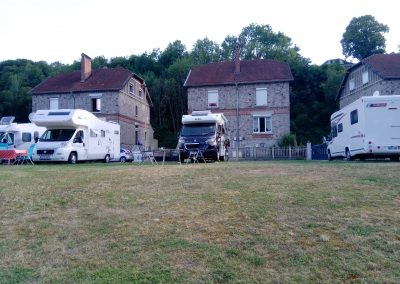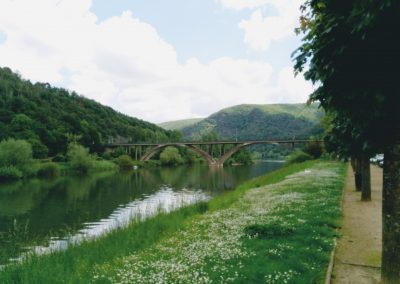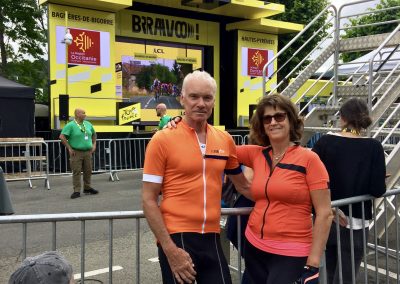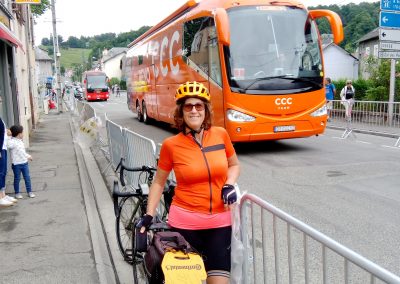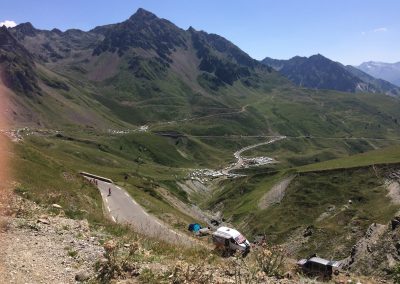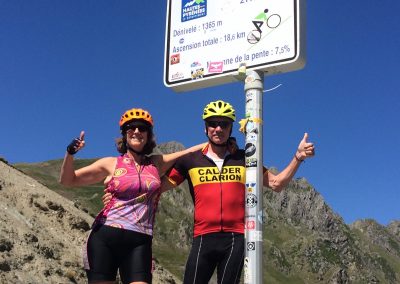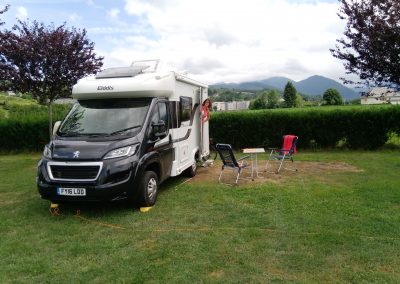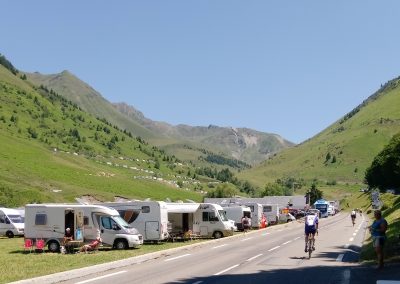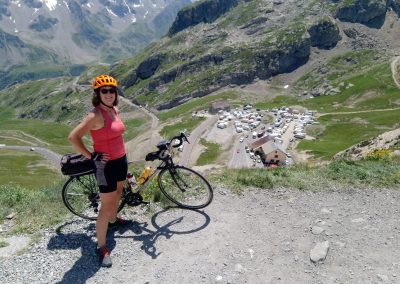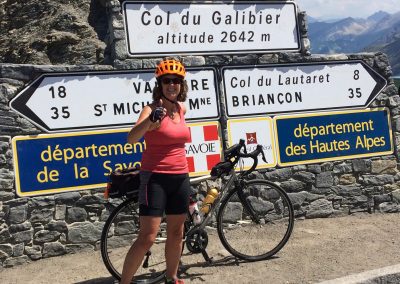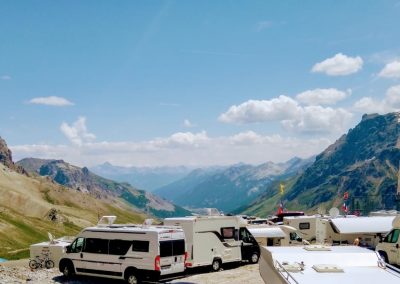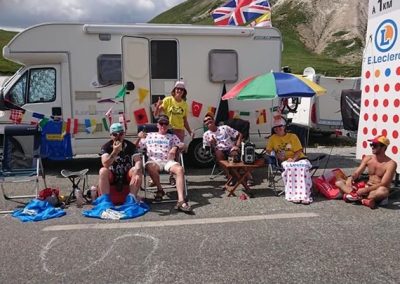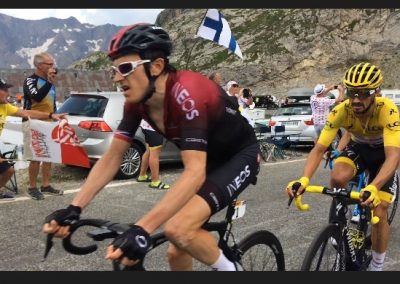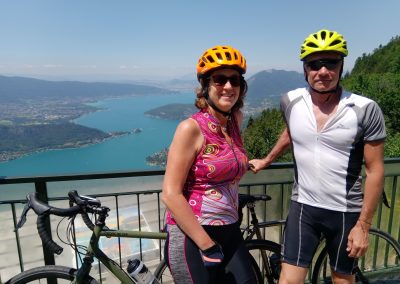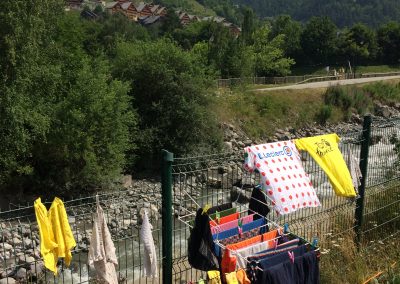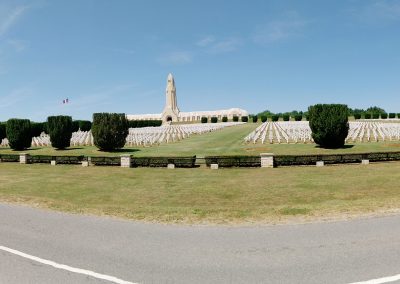FRANCE 2019 – BY VAN AND BIKE
“They’ve put back the date of the conference to the end of June”
“That’s fine we can go from there to the beach festival, after a few days in Amsterdam”
“Yeah, and then head south through the Ardennes and find that fantastic Aire on the Meuse”
“Brilliant, it’s a plan”
And so started our first long trip abroad with the van and bikes – Tour de France here we come.
“Always wear padded shorts if cycling over 20kms”
First stop was Amsterdam for a conference…
We found a campsite in the Amsterdam suburb near where the conference was and cycled into the event each morning. We didn’t realise however that Amsterdam was a really big city, and when we cycled into the centre alongside the river Amstel it was close on 30km each way – and we had decided to wear normal clothes and footwear. It seemed like double the distance on the way back – lesson here: always wear padded shorts for any journey over 20km!
Next stop was Zandvoort where we checked into a campsite next door to the race track where the Dutch F1 GP was due to be held in 2020 (ultimately cancelled). The weather was amazing – hot and sunny – and the dance music festival Luminosity was just the perfect match with great music and happy people, luckily many old school ravers like us so didn’t feel too old. And it finished before midnight so we were able to get some decent cycling in too through nature parks and sand dunes. And a ride on an old Dutch bike with no brakes – just back pedalling. Scary!
We then started planning where to go next – because the only things booked was the conference, the beach festival and a campsite in the Pyrenees (more of that later); everything else we made up as we went along.
But before we travel through France there are a couple of important lessons we learned on this trip:
-
the joy of “Aires”
-
and the joy of “wild camping” at the Tour de France.
Aires
“Some even have toilets and showers”
“Aire” will be a familiar expression as you drive through France with “Aire de repos” and “Aire de service” cropping up on major routes. But the French, and elsewhere in Europe, have taken that to another level with the humble “Aire” for the owners of camper vans and motorhomes meaning a small, sometimes free or very low cost, camping area near the centre of a small town. It may or may not have facilities like fresh water and a place to empty other “waters”. Some even have toilets and showers (small charges). Either buy a book like “Aires de camping Cars – Europe” (https://www.amazon.co.uk/Aires-camping-car-Europe) and the Michelin map guide “France Camping Car” with 2450 “Aires de Service et Campings” (apparently) or at the entrance/exit of any town look for a sign for Aire or the sign.
Another way of finding these and other free or nearly free sites are the any number of websites and apps. The best one we have found for all over Europe is Park4night (www.park4night.com) This app covers many Aires, laybys and other quiet places to spend the night or day. It is kept reasonably up to date by those who use them posting pictures of the sites and any notices/signs displaying costs and restrictions. It also lists paid for campsites – useful for showers! – and you can search “near me” or “around a place”.
“Wild camping does not mean all night parties and raves! “
It’s camping without staying at an official camp site. Other expressions are “off grid” or “adventure camping” but it basically means pitching your tent or camper van where it is safe and legal to do so for free and not on a regular campsite. You may have no facilities or, at best, public ones nearby, most usefully public loos ; you could be in or near a town, or in the middle of nowhere. There are rules of course with the basic one being that if the land is owned by someone you must seek their permission to camp.
That does not mean to say that anywhere else is OK – check out the many websites dedicated to the subject https://www.countryfile.com/uk-travel/holiday-ideas/a-beginners-guide-to-wild-camping/ or https://www.pitchup.com/wild-camping/ and many more. A good rule of thumb, but by no means recommended or fool-proof is “safety in numbers” – if there are other people camped then it might be OK. But take your litter home – “leave no trace”; and use the local town for shopping/meals etc.
“We cycled the Tourmalet – just like the professionals”
And that is how we got started in France at the Tour. We had paid for a campsite at Bagneres-de-Bigorre in the Pyrenees, where the Tour that year would finish one stage and two days later ride up the Col du Tourmalet nearby. Incidentally the town is twinned with our home town of Malvern and although the campsite reception recognised it, alas the bunting in the town was for the Tour not twinning visitors!
We eventually pitched our camper van on the site and had a lovely day the next day mingling with all in the town waiting for the Tour to arrive; we even cycled the last few kilometres of the course waving to the spectators lining the course before they closed the road. And for a bonus the final sprint was won by the British rider Simon Yates. The next day we cycled up the Col du Tourmalet, all 20km of it, the day before the professionals, taking the cheers of encouragement from the already assembled motor-homers. What a fabulous ride in glorious weather and the opportunity to experience something of what the Geraint Thomas’ of this world would experience the next day.
But the crowds of precariously parked motor homes and camper vans gave us an idea – could we do that? If so where?
“Look ma – top of the world” (with apologies to Jimmy Cagney)
That night saw a frantic searching through maps of the Tour’s route and maps of France leading to the conclusion that the best place was at the top of the col du Galibier in the Alps – but the problem was that it was over 800km away! So to do it we had to break our rule on not paying for motorways (that’s not just being ‘tight” with money, it’s also missing out on the joys of the journey) and drive as far as we could the next day, park up overnight and then get to the top of the Galibier early the next day.
Why the rush? Talking to campers on the way up the Tourmalet we found out that you could not just turn up on the day and expect to get a good spot – 48 hours ahead of the peloton was minimum, but 72 hours for the best spots ideally. We made our way up the Galibier (where there wasn’t a mountain-top finish, it was 18km down the other side in Valloire) hoping to find a quiet roadside pull in – wrong. We drove up the precipitous col and ended up at the top with all the other camper vans – but luckily we managed to find a fantastic spot to camp and with the help of friendly French fans we slotted our van in.
“It’s worth the effort – the atmosphere’s fantastic up the mountain”
It really is! We quickly made friends with the neighbours – all Tour De France fans and many keen cyclists and lots of broken English and bad French for the next 48 hours till the whoosh of the peloton rushing by (even uphill). We have figured out some ground rules for mountain-top camping:
- Be assertive – spot your space and go for it, it’s going to be ‘home’ for at least 3 days
- Stock up first with food and alcohol
- Have a full fresh water tank
- And an empty waste water tank and toilet
- Be prepared to chat endlessly to your neighbours in many languages, including broken English/French/German/Italian/Czech/etc
Just finally, it was truly magical with time to cycle both sides of the Galibier whilst waiting – and boy, is the north side from Valloire hard! And we can say that we saw the decisive moment of the 2019 tour when Egan Bernal rode away from Geraint Thomas and Julian Alaphilippe to seal his victory (victory confirmed on the weather truncated stage the next day).
Would we do it again – you bet and when the Tour map for 2020 was released in October 2019 we plotted where the best place was – but we are keeping that secret! (subject to it taking place of course)
“What we loved and what we learned?”
- We loved the beautiful Ardennes region – in Belgium and France alongside the river Meuse, with terrific cycle paths and beautiful towns with the fabulous architecture. Super flat cycling, great for families!
- We learned proper campsites can cost loads near the coast – unless you have a boot load of kids who want waterslides, best avoid them. We do love a hot shower though after a sweaty ride or two. There’s no lingering in the van shower! We did find a great value campsite 5 km from the coast, even with a pool, and just a 25km ride to the lovely old port of Sete.
- We really loved Lac d’Annecy – it’s a gorgeous massive Lake that you can cycle round on cycle paths, it’s safe and easy. There’s also really punchy climbs up the col de Forclaz with picture perfect views to reward the efforts. The climb on the other side, the Semnoz, was longer at c 22km but easier – both had bars/ restaurants at the top.
- We’ve learned some of our best times have been totally unplanned – we ended up on Lac d’Orient near Troyes, it was such a fabulous place that we stayed 3 days, off grid, with a host of other campers opposite the beach with toilets and showers nearby. Thank you Park4Night.
“The joy of the unexpected – that’s the freedom of campervanning’
And finally as we wound our way back towards the ferry we came across the final resting place of General De Gaullle in the small village of Colombey-les-Deux-Eglises with a splendid museum in his honour. What a fabulous find. As was the provincial town of Laon, north of Reims with a amazing church on top of a hill overlooking the town. Truly spectacular set in the midst of narrow winding street.
